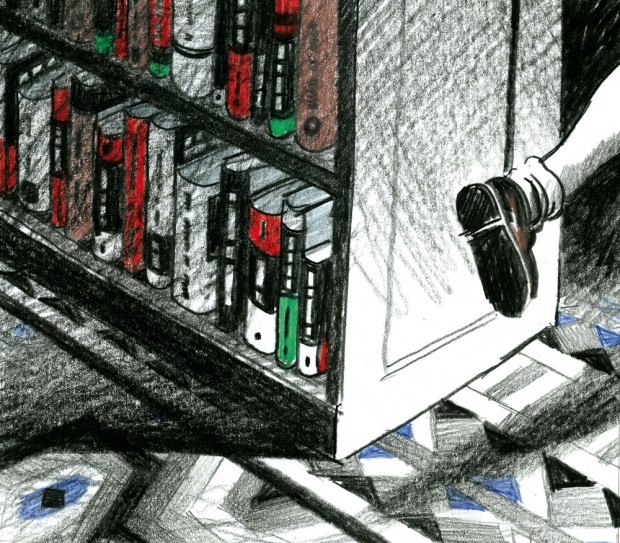In the novels of both Jaume Cabré and Carmen Laforet, the city is full of post-war fear and pain, but their main characters keep out of it and live their own personal tragedies. None of them is free to enjoy life in their own way.
Intelligence can only be narrated by intelligence. Jaume Cabré achieves this brilliantly in the novel Jo confesso [I Confess]. And his achievement is even greater, as he imbues the reader with this intelligence, as if by magic, making them part of it.
As I read this book, my interest ever-growing, I wondered, my professional curiosity piqued, how the author had managed this, that is, to draw us into the brilliant mind of Adrià Ardèvol while also conveying his feelings and anguish to us, and even that feeling of guilt that overwhelms the character for reasons that had occurred 500 years before he was even born, all tied in with a universal feeling of guilt.
Jaume Cabré obliges us to live his character from within and without, using, with the utmost naturalness, both the third person and the first person on alluding to him. Perhaps this is why reading Jo confesso was such an uplifting experience for me. I felt the novel conveyed me to a house in Carrer de València, just like when I was first transported to Barcelona in my adolescence, also thanks to literature and my mother, Carmen Laforet, to another house in the Eixample in Carrer d’Aribau. I did not actually make it to Barcelona in person until several years later, so the first presentation of the city through Nada [Nothing] made a strong impression on me.
Jaume Cabré’s novel has brought me to this first image. Perhaps it is due to certain similarities in the way both Andrea, in Nada, and Adrià in Jo confesso, perceive the city. The aftermath of the Civil War is present in both novels, and in Jo confesso’s case, it is compounded by the events occurring in the wake of the Second World War. In both novels the city exudes that fear and pain. Yet both Adrià and Andrea remain outside this, experiencing their own internal tragedy. Neither one of them is free to enjoy life in their own way. They are unwillingly shut away in a house in Barcelona’s Eixample district, where there is a hint of a prosperous, Catalan middle-class past. However, both of them manage to unfetter some of the chains that bind them, and we are treated to the plenitude and the joy of strolling through the streets of the Eixample, towards the University, the Liceu, the church of Santa Maria del Mar, sensations that mingle with my own experience whenever I am lucky enough to wander around this lovely city.



